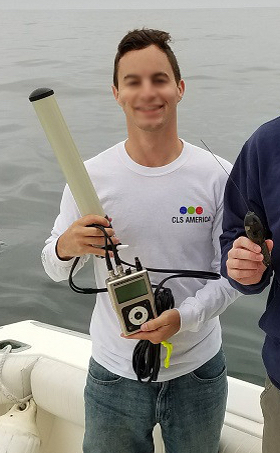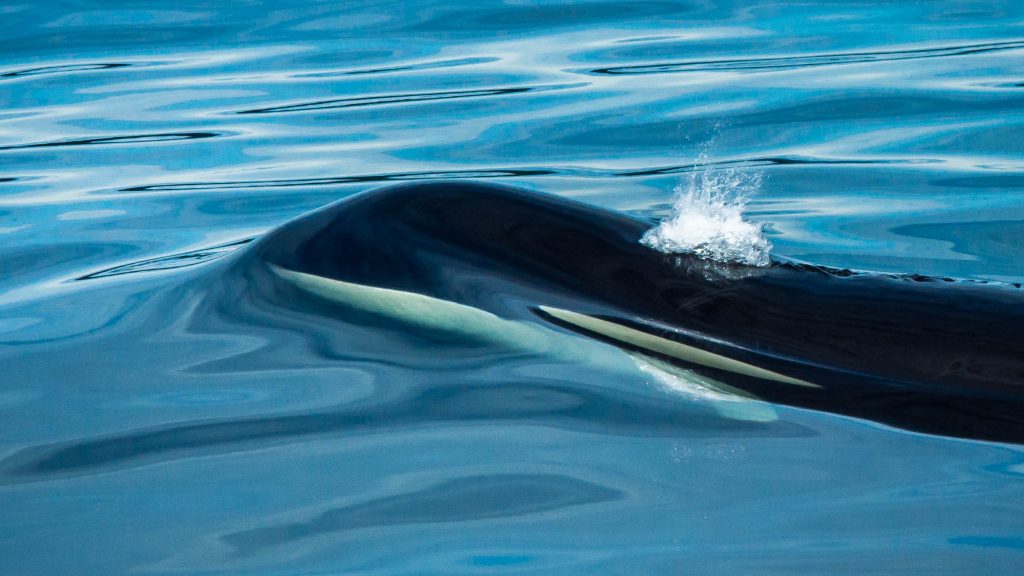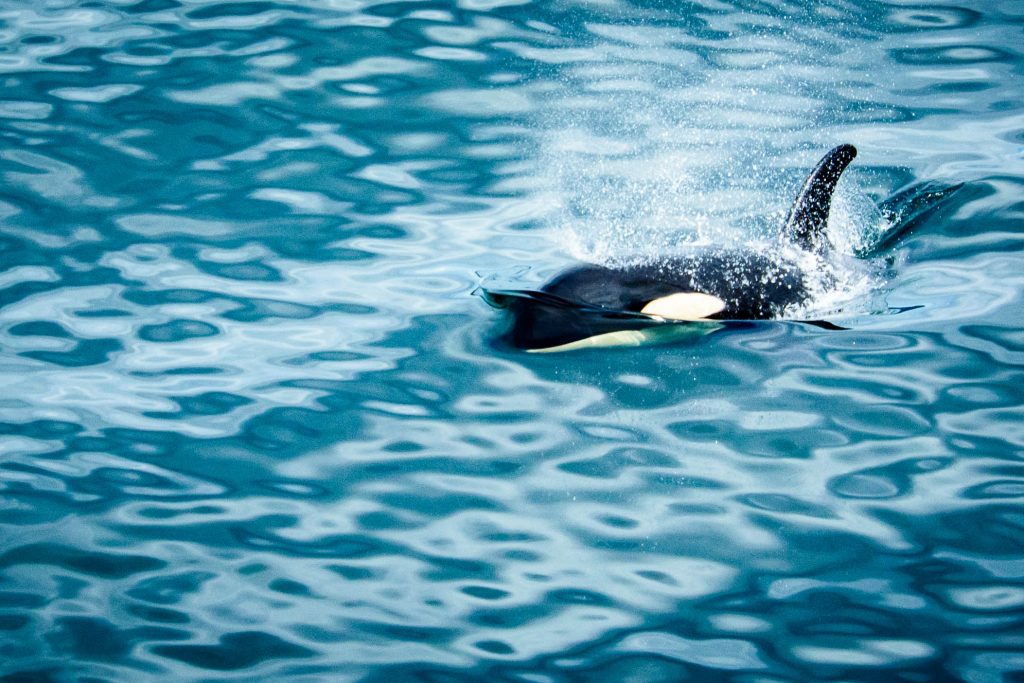Why are southern resident killer whales in trouble? This summer, help us find out if the southern residents are getting enough to eat in the Salish Sea. New biologging tags and a goniometer will help determine if whales are struggling to catch Chinook salmon. We have already purchased two biologging tags with funding from Fisheries and Oceans Canada. However, two tags are not enough. We need to raise $50,000 by July 1st to purchase two more tags and a goniometer. Will you help us?

The new-generation biologging tags are non-invasive, attaching to the whale with suction cups. These CATs tags (Customized Animals Tracking Solutions) record whale behaviour by measuring fine-scale underwater movements and capturing the whale’s eye-view using an underwater camera. They also record ambient sound using a built-in low-frequency hydrophone. These are the same non-invasive suction-cup tags used in the filming of the BBC’s Blue Planet II.
These tags are designed to float free from the whale after a few hours and be recovered using a goniometer. Once we recover the tags, we will download the recorded data, recharge the batteries, and redeploy them. We need to place our order as quickly as possible, as we expect to deploy the tags this summer when resident killer whales are most likely to be present.
Tag deployments and simultaneous prey recording costs are covered under an existing grant from Fisheries and Oceans Canada.
How to contribute
Canadian donors will receive an income tax receipt for contributions, which may be used to claim a charitable tax credit. Donating is as simple as clicking on the donate button.

US and other international donors may also achieve charitable treatment for their gift. Please see the International Gifts page: https://support.ubc.ca/waystogive/international-gifts
Background
These biologging tags are new and have never been used on resident killer whales. The tags will allow us to determine whether southern resident killer whales are having trouble catching Chinook salmon. Each tag is equipped with:
- a high-definition video camera to record underwater behaviours that are not easily seen from a vessel (e.g., prey sharing and species identification);
- a time-depth recorder to examine dive behaviour and 3-D accelerometers to assess movement behaviour during foraging dives and quantify energy expenditure;
- a fast acquisition GPS to reconstruct the path of the animal; and
- a hydrophone to confirm successful prey capture (i.e., “crunches”) and to record ambient sounds in killer whale habitat (e.g., noise generated from vessel engines and propellers).

We will access Argos locations online to determine the approximate location of the floating tag, and will track the tag down from our research vessel with an Argos goniometer that acquires a UHF signal from the satellite signal.
In addition to tracking the feeding behaviour of killer whales, we will collect fine-scale information about the encountered prey field of the tagged killer whales using multi-frequency echosounders. After tagging, we will continuously record the location and behaviour of the tagged animal using an Inspire 2 drone. We will also document the location, distance and bearing of vessels in the surrounding area.
The echosounder will record information about the vertical distribution and abundance of Chinook salmon near the tagged whale to:
- determine the prey conditions necessary to support successful foraging;
- quantitatively compare the prey field of northern and southern resident killer whales; and
- test whether foraging success is a function of prey abundance and depth distribution.
The built-in hydrophone will be used to confirm successful prey captures (e.g., acoustically detecting “crunches”) and to measure and compare ambient noise in northern and southern resident killer whale habitat. We intend to raise future research funds to determine to what extent ambient noise generated from vessels may be limiting southern resident killer whales feeding success through collaboration with JASCO Applied Sciences.
The CATs tag records the fine-scale foraging behaviour, vocalizations and ambient noise encountered by resident killer whales. It is equipped with an HD camera, 3-D accelerometer, time-depth recorder, fast acquisition GPS and low-frequency hydrophone (HTI 96kHz mini hydrophone). The SPOT tag (Wildlife Computer’s satellite telemetry tag) that accompanies the CATs tag will provide Argos locations to track the whale and recover the tag.

The Argos Goniometer is needed to acquire the UHF signal from the satellite tag and track down the floating tag from our research vessel. It is a hand-held device (highly sensitive radio direction finder) that will used onboard the research vessel to acoustically detect the UHF pings from the satellite transmitter. The goniometer will allow us to determine the bearing and relative distance of the tag from the vessel. This is the most effective tool used to pick-up the UHF signal and will allow long tag deployments to leave a tagged whale unattended, and then retrieve the tag at a later date once it has floated away from the animal.
Anticipated Results
The data we collect will allow us to:
- test whether the foraging success and prey abundance are comparable for northern and southern resident killer whales and
- assess whether foraging success is lower for southern resident killer whales and whether this corresponds with lower abundances of Chinook salmon.
In the future, the collected acoustic data can also be used to estimate noise levels received by the whales to test whether there is a relationship between foraging success and ambient noise.
Additional applications include applying these tagging methodologies to study the movements and feeding behaviour of Bigg’s killer whales to assess what the energetic impacts of the proposed 50% seal and sea lion cull would be in British Columbia. Data will be collected on Bigg’s and resident killer whales in 2019 and 2020.
Budget
Each tag costs ~$16,000, and the Argos goniometer and associated satellite charges are ~$18,000. Total cost is $50,000.
Communication
The data we collect will be presented at scientific conferences and ultimately published in peer reviewed scientific publications. In the interim, we will share images and provide donors with updates on our progress and research findings through email, social media, and UBC’s Marine Mammal Research Unit’s website.

